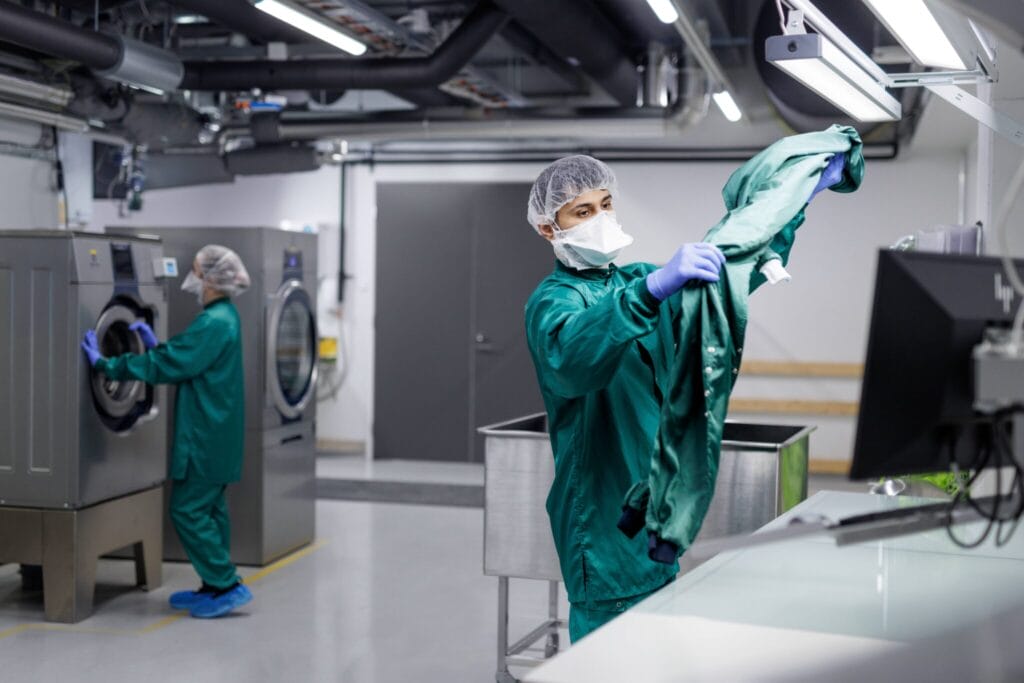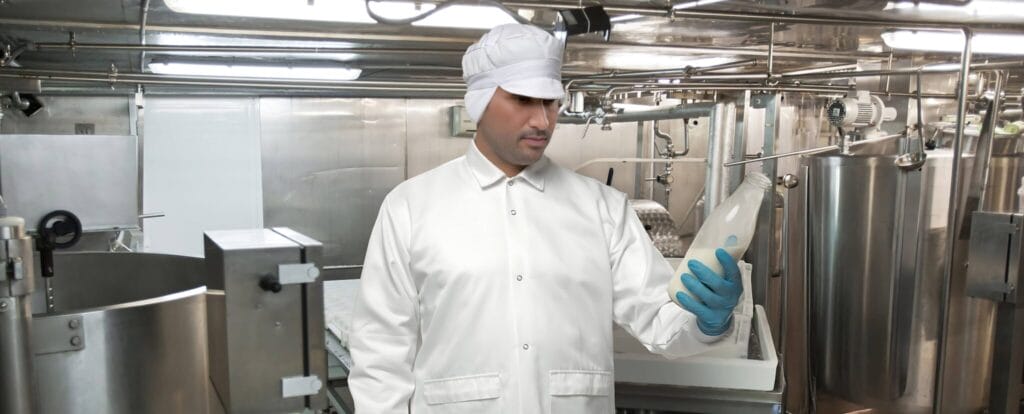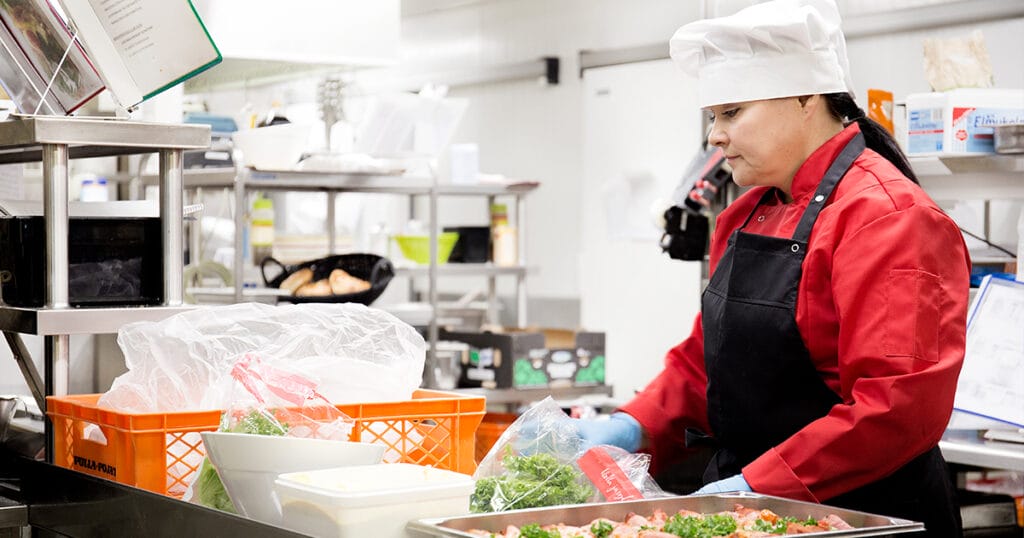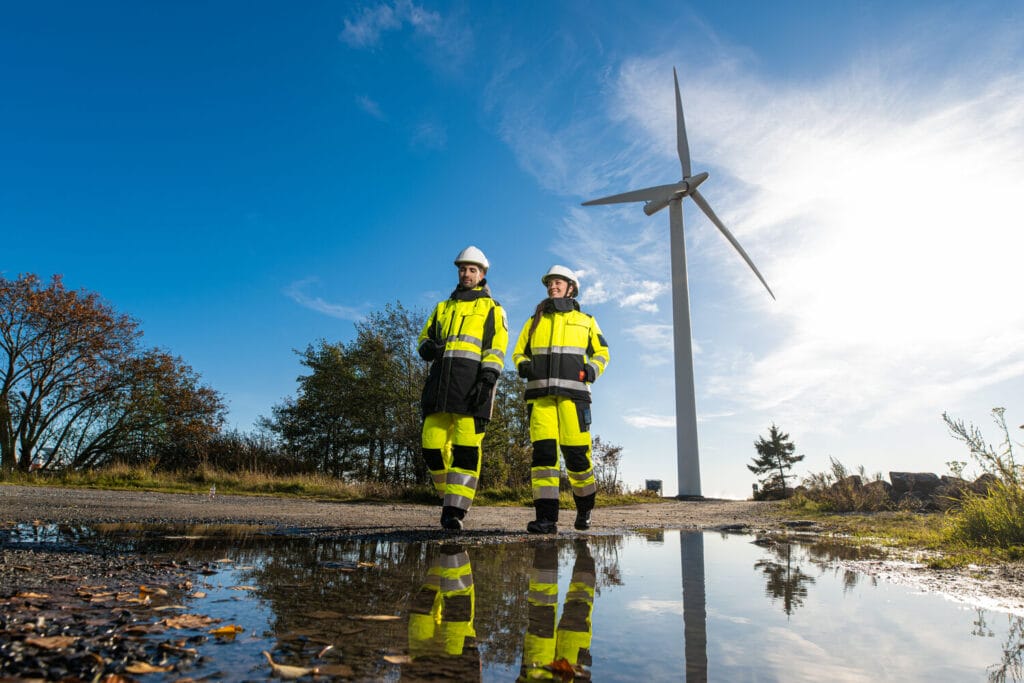Our commitment to Sustainability: Design for circularity, build to last
“Sustainability is the north star that guides us through the workwear design process. Circular design is an underlying mindset from the outset. We start by analyzing the need to design something new and account for textile waste and recycling at the very beginning of the process.” -Soile Pakarinen, Designer, Workwear Services.
We, at Lindström, believe in acting decisively to promote responsible business practices within our firm and with our customers. To see how we walk the talk regarding sustainable workwear, we decided to take field notes on our workwear design process with Designer Soile Pakarinen and Product Specialist Inari Laveri.
Soile stresses that we do not produce for the warehouse but a ready user. Furthermore, we believe in establishing long-term relationships with our suppliers to ensure a stable supply chain and responsible procurement. When designing workwear, sustainability is the key driving force that helps us optimize for business, environmental and societal value.
Longevity comes first

We are extremely cautious of our intentions in the design stage as it is hard to reverse the impact of design decisions once implemented. Our business model stems from the principles of circular economy. It is in our business interest to maximize the life cycle of our garments being in the rental service market, unlike businesses that rely on selling textile. We have a cradle-to-cradle approach towards our textiles as it serves our circular business model best.
Product specialist, Inari, asserts that the emphasis is on utilizing durable materials, ease of repairing and reusability to prolong the use phase of our garments. The process entails considering which elements will require frequent repairs, instate modular designs to easily take out parts that often need repairs and adding reinforcement patches in high-stress areas. We use limited accessories and keep our designs simple, which not only makes repairs easy and quick but also allows us to travel light on inventory and promotes recyclability.
Another focus area is to elevate the scope of reusability of our products. We deliberate that our garments’ design accommodates multi-use, multi-purposes and can cater to different users. Small details like adjustable features go a long way for making a garment feasible to be used by many wearers. Our color schemes, styles and sizes are such that new and old collections can be infused together to refresh existing workwear stocks of our customers and can be reused by different businesses.
Our garments are designed to be in circulation for at least three years and hopefully more. Emotional durability is of great consequence when considering the longevity of the use cycle. We co-create with our customers to understand their industry-specific challenges, get cues on their occupational identity and incite a sense of belonging for longer use.
Design for circularity
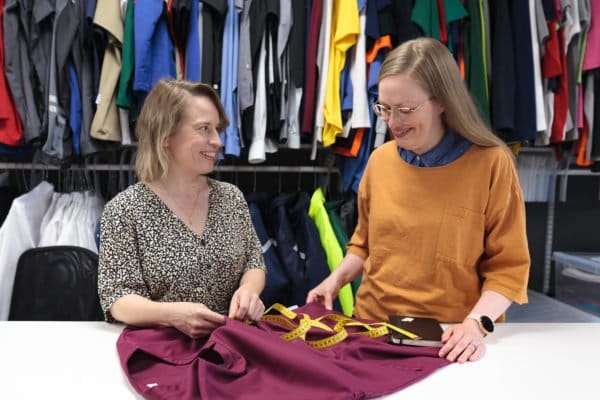
We believe that focusing solely on product durability and end-of-life management without also addressing the more significant and growing problem of over-consumption would be to miss the point entirely.
A critical aspect we need to tackle in this regard is customization. We advocate minimal customization to our customers in the interest of environmental impact and promote Lindström offering as is. Going aggressive on customization shrinks the scope of our garments’ reusability and is taxing the environment.
To build a regenerative system for our garments, we place our users in different work settings. The first user group could be in client-facing roles where the workwear needs to be in mint condition. The second user group can be in production facilities where marginal wear and tear and visible repairs are acceptable. And the third user group could be working in conditions where the garments are soiled, and the repairs are irrelevant. Customization places limits on these possibilities, which could otherwise mean consuming three times less workwear. We believe that smart cooperation combined with our cautiously designed offerings can mean more sustainable and cost-efficient solutions for our customers and us.
A drive towards collaborative future
We understand that sustainability demands collective action as there is no one single perfect solution. Soile shares that we are constantly on the lookout for the most sustainable way to extend the lifetime of our garments. While we already use a high content of recycled fibres and aim for a higher share, we are conscious of not compromising the durability in the process. She elaborates that it is a challenging balancing act where we rationalize using recycled fibres and virgin resources to maximize our products’ durability while making the least environmental impact. In our new CarePro collection, wherever it made sense we have replaced cotton with wood-based Tencel fibre. In a similar pursuit, we joined hands with our long-term partners Carrington Textiles to accelerate the development of regenerative cellulose fibre.
Reflecting on the way forward, Inari says that transparency is vital when thinking about broad and complex subjects such as sustainability. Collaborating with other players in the industry, even with competitors, to find new ways of doing business that is less extractive is essential to build collective consciousness towards sustainability.


